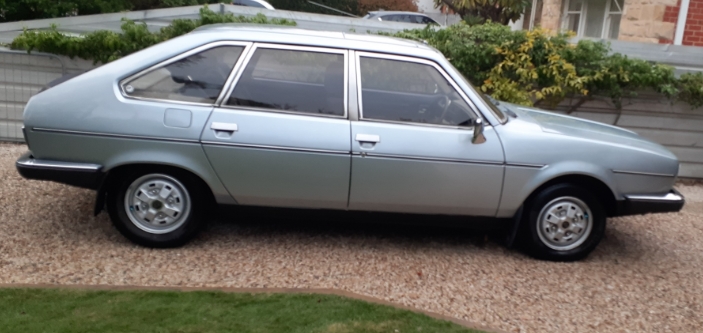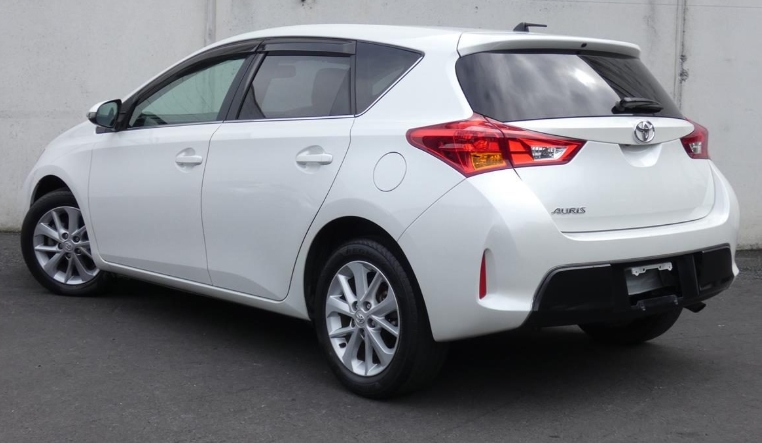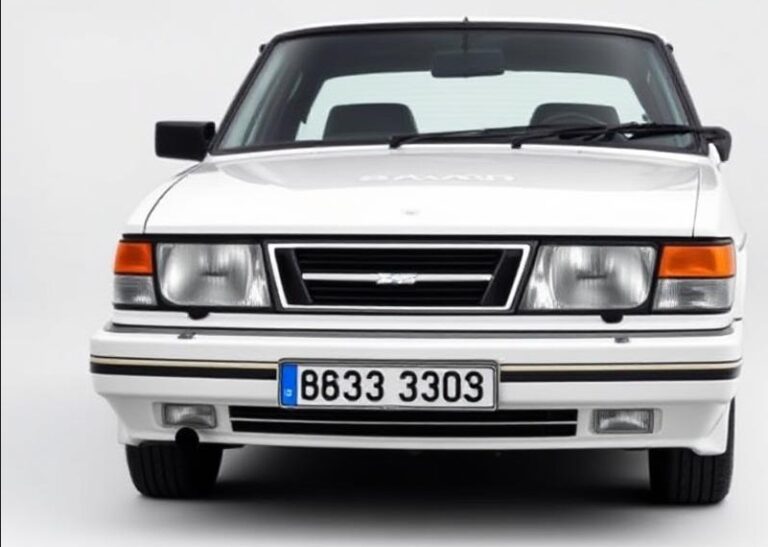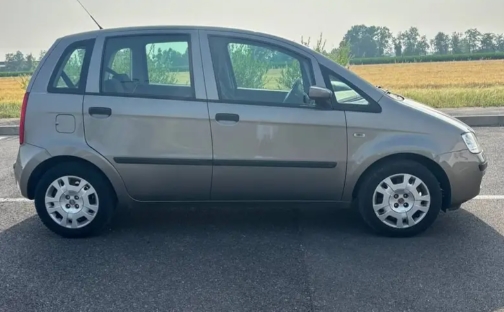The Renault 30 Evolution: A Bold Bet on Six Cylinders and a Hatchback
In the mid-1970s, the automotive world was a landscape of established conventions. The executive car segment, in particular, was the domain of the traditional three-box saloon, dominated by the stoic, rear-wheel-drive offerings from Germany. To challenge the likes of Mercedes-Benz, BMW, and Audi required either immense confidence or a radical new approach. Renault, France’s state-owned automotive giant, chose the latter. At the Geneva Motor Show in March 1975, they unveiled the Renault 30, a car that audaciously combined the practicality of a hatchback with the ambition of a V6 engine. It was a statement of intent, a uniquely French interpretation of luxury, and the beginning of a fascinating, decade-long evolution.
The Genesis: Project 127 and a Pan-European Heart
The story of the Renault 30 is intrinsically linked to its more modest sibling, the Renault 20. Both cars were born from “Project 127,” a clever and cost-effective engineering strategy to develop two distinct models from a single platform and bodyshell. The plan was simple: the Renault 20 would be the volume seller, equipped with proven four-cylinder engines, while the Renault 30 would serve as the flagship, showcasing Renault’s engineering prowess and powered by a brand-new, prestigious V6 engine.
The visual distinction between the two was deliberate and effective. While the Renault 20 featured two large, rectangular headlamps, the Renault 30 announced its upmarket status with an imposing quad-headlamp design, featuring four round lights set into a chrome-accented grille. This front-end treatment, combined with details like standard bumper overriders and more luxurious trim, gave the 30 a presence its sibling lacked.
At the core of the Renault 30’s identity was its engine: the 2664cc “PRV” V6. This was not just a Renault engine, but the product of a collaborative venture between Peugeot, Renault, and Volvo. Initially conceived as a V8, the project was re-engineered into a 90-degree V6 in the wake of the 1973 oil crisis. This engine would become a cornerstone of high-end French and Swedish motoring for two decades, but in 1975, it was the fresh, beating heart of Renault’s new contender.
1975–1978: The Launch Model – Renault 30 TS
The first model to roll off the assembly line at Renault’s Sandouville plant was the Renault 30 TS. It was launched as a single, high-specification trim level, designed to make an immediate impact.
Engine: 2664cc PRV V6 with two Solex carburetors.
Power: 131 PS (96 kW; 129 hp).
Transmission: 4-speed manual or an optional 3-speed GM-sourced automatic.
The “TS” (Tourisme Sport) designation was perhaps a slight misnomer; the car was engineered for grand touring comfort rather than outright sportiness. Its true luxury credentials lay in its standard equipment list, which was remarkably comprehensive for the era. The 30 TS came equipped with:
Power-assisted steering, a feature that made maneuvering the large front-wheel-drive car effortless.
Electric front windows.
Central locking.
Plush velour upholstery and deep, comfortable seats.
Tinted glass.
The Renault 30’s hatchback design, with its vast, versatile boot space and folding rear seats, was its unique selling proposition. It offered a level of practicality unheard of in the executive class. The ride quality was exceptional, with long-travel, all-independent suspension soaking up road imperfections in a manner that was characteristically French. However, the initial reception was mixed. While critics praised its comfort and practicality, the carbureted V6 was noted for its thirst, and its 90-degree V-angle meant it wasn’t as inherently smooth as the inline-six engines from its German rivals.
1978–1981: Expansion and Refinement – The Arrival of the 30 TX
By 1978, Renault had a clearer understanding of the market and the 30’s place within it. The answer to the criticisms of the V6 engine’s performance and economy arrived in late 1978 for the 1979 model year with the introduction of a new flagship model: the Renault 30 TX.
The 30 TX represented a significant step forward, primarily thanks to its engine modifications. The Solex carburetors were replaced with a modern Bosch K-Jetronic fuel injection system. This was transformative.
Engine: 2664cc PRV V6 with Bosch K-Jetronic fuel injection.
Power: Increased to 142 PS (104 kW; 140 hp).
Transmission: A new 5-speed manual gearbox became standard, with the 3-speed automatic remaining an option.
The new engine was not just more powerful; it was smoother, more responsive, and crucially, more fuel-efficient. The 5-speed manual gearbox, with its overdrive top gear, further enhanced its long-distance cruising capabilities, making it a more credible competitor on the autobahns of Europe.
To complement its enhanced performance, the 30 TX was loaded with even more luxury features. Standard equipment over the 30 TS now included:
Stylish alloy wheels.
An electric sunroof.
Cruise control.
A trip computer.
Headlamp wash/wipe system.
Optional extras like leather upholstery and air conditioning became more widely available.
During this period, the Renault 30 TS continued to be offered as the entry-level V6 model, benefiting from some of the minor running changes and interior updates applied across the range, but retaining its carburettor engine and 4-speed gearbox for a time before it too gained the 5-speed option. A subtle facelift for the 1981 model year introduced a new front spoiler to improve high-speed stability, a redesigned dashboard, and updated interior fabrics and finishes for both models.
1982–1984: The Unlikely Flagship – The Renault 30 Turbo D
The second oil crisis of 1979 sent another shockwave through the automotive industry, accelerating the “dieselisation” of the European car market. Suddenly, fuel economy was paramount, even for buyers of larger cars. Mercedes-Benz had found great success with its durable diesel saloons, and Renault saw an opportunity to leverage its own advanced diesel technology.
In a move that would have been unthinkable at the car’s launch in 1975, Renault introduced the Renault 30 Turbo D in late 1981 for the 1982 model year. This model took the prestigious, well-equipped body of the flagship 30 and installed the most advanced diesel engine in Renault’s arsenal.
Engine: 2068cc (2.1L) Type J8S four-cylinder turbodiesel.
Power: 85 PS (63 kW; 84 hp).
While 85 PS may seem modest, it was a highly impressive figure for a diesel of its size at the time. The Garrett turbocharger gave it excellent torque and drivability, and with a top speed of over 100 mph (160 km/h), the Renault 30 Turbo D was one of the fastest and most refined diesel-powered cars in the world.
It was positioned as a premium model, not a bargain-basement economy option. Its trim and equipment levels were comparable to the petrol-powered TX, offering a unique combination of executive luxury and remarkable fuel efficiency. For high-mileage business users, it was a compelling proposition, blending the comfort and status of the 30’s chassis with running costs that were a fraction of the V6 models. The arrival of this model effectively marked the end for the less popular 30 TS, leaving a simplified two-pronged lineup for the final years: the V6-powered 30 TX for performance and the 30 Turbo D for economy.
.
NO MORE dead batteries with this:

.
The End of the Road and a Lasting Legacy
Production of the Renault 30 ceased in 1983, with the final cars being sold into early 1984. Over its nine-year production run, just over 145,000 Renault 30s were built—a respectable figure for a niche flagship, but far from the volumes achieved by its German competitors.
Its legacy, however, is far greater than its sales numbers suggest. The Renault 30 was a pioneer. It gambled on the idea that an executive car could be something other than a saloon, and it won. It proved that a hatchback could be luxurious, prestigious, and desirable. This radical concept was so successful that Renault doubled down on it for its successor, the hugely popular Renault 25, which refined the V6-powered luxury hatchback formula to perfection.
The Renault 30 was a car of contrasts: avant-garde in concept yet traditionally comfortable in execution. It was a vehicle that offered the practicality of a family estate with the smooth power of a V6 engine. From the original carbureted TS to the fuel-injected TX and the groundbreaking Turbo D, its evolution mirrored the turbulent economic and technological shifts of the late 1970s and early 1980s. While it may not have toppled the German establishment, the Renault 30 carved its own distinct path, leaving an indelible mark as a brave, innovative, and quintessentially French flagship.







